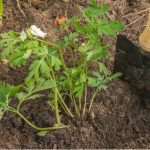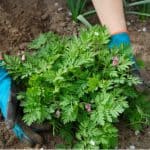Last updated on May 10th, 2022
Our site is reader supported, this means we may earn a small commission from Amazon and other affiliates when you buy through links on our site.
Bleeding Hearts are beautiful plants that produce flowers with an appearance very similar to a heart shape that is drooping downwards, giving the impression that it is bleeding. These are delicate flowers that dangle along the pendant stalk and prefer shaded, cooler areas, like those found in the UK. What’s more, you can grow them very successfully in a pot so you don’t need a large garden space to cultivate them.
It’s worth mentioning that they will grow more vigorously and larger in the ground so if you can plant them in the ground, we recommend doing so. However, they also grow well in large containers and pots.
Start Planning
Position them in partial shade
The first thing you need to consider is whether you have the appropriate environment or conditions. They prefer shaded areas and in fact, if they are exposed to too much sun or too much heat they may not flower and they might go dormant until the following year.
This is why you need to consider where you’re going to put the containers. Make sure that you place wheels or some sort of supportive structure on the bottom of the container if you need to be able to move it around and store it during dormancy because they start to look tatty in summer or to help keep it out of the sun during summer.
It does start to produce flowers early, often at the beginning of spring so you can enjoy its stunning blooms when not much else is flowering in the garden. You can grow them in a pot that is slightly smaller than one you might consider using for a perennial that flowers later, like Hostas. That being said, you want to choose a large enough pot to accommodate their size because they do get quite big.
Picking the right container
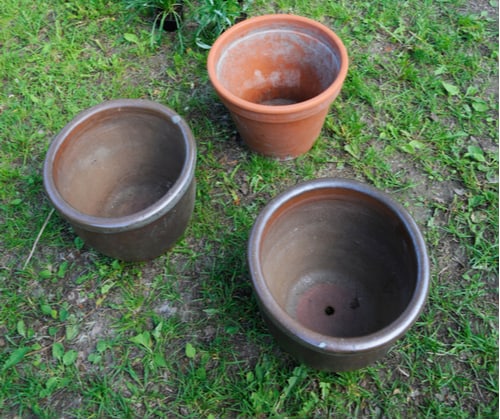
Picking the right container is equally as important. These plants can become very substantial as herbaceous perennials, so you will need to have a large enough container that gives the roots enough space to stretch out. If you don’t have a large space to accommodate a big container, you can always pick a dwarf variety like the Dicentra formosa.
Bleeding Hearts can grow for 4 or 5 years in a very large container but after that, you will need to divide them and repot them.
Learn about dividing Dicentra in our informative guide by clicking here
How to plant a Bleeding Heart
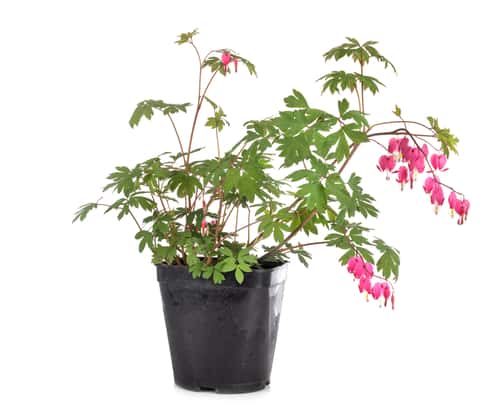
Once you have the right pot you need to make sure that you have the right potting soil. These woodland perennials are accustomed to growing on a forest floor with trees above them and grass below them.
They need a good quality potting soil mixed with a lot of organic material, something that mimics the natural environment of a forest. We recommend mixing in some homemade compost and grit to improve the drainage.
Check out our top recommended multi-purpose compost that would be ideal for planting a Dicentra in.
Watering
The soil should also be kept moist but not overly wet. These plants suffer from root rot very easily so you have to be vigilant about watering when there is extreme heat but never overwatering to the point that the plants are susceptible to root rot or fungal diseases. This isn’t usually a problem when growing Dicentra in pots because they require a lot of water, but it is still worth bearing this in mind as they don’t like soggy soil.
Position them in shade or partial sunlight.
In terms of light exposure, you need to place the container somewhere that’s shaded or has filtered sunlight. It’s okay to have early morning sun exposure but beyond that, they need a lot of shade. Again, consider the natural environment where these plants are grown, underneath the canopy of large trees which helps them to produce early blooming flowers in the spring when the tree branches are at their bare state, and then they enjoy the protection of the trees and leaves throughout the warmest months.
Feeding
If you need to add fertiliser because your soil is of poor quality you can use a slow-release fertiliser but it’s better to remove the top layer once a year and replace it with good quality compost that has some fertiliser mixed in.
Regular Care
Once you have successfully planted your Bleeding Heart plant, bear in mind that you can deadhead them after they have finished flowering to prevent them from self-seeding.
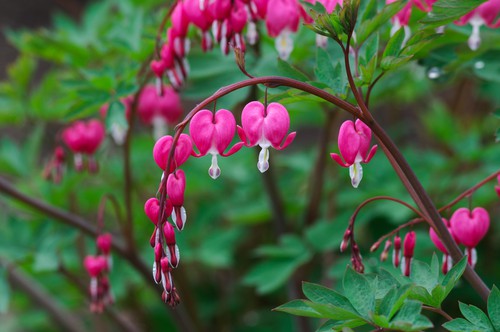
However, deadheading is not necessary for the overall health of the plant. More importantly, they go into dormancy at the end of spring or the beginning of summer. The leaves start to turn yellow and some of them fall off. You can trim back your plant to the basal growth lower down if you want to keep it aesthetically appealing, or simply move it somewhere where it is not on full display. As it is a perennial it will grow back again the following spring.
It’s worth mentioning that while I worked in a nursery, we would trim them back hard after they had finished flowering, and sometimes they did flower again (not always) for a second time.
Learn how to grow Dicentra from seeds in this step by step guide.

